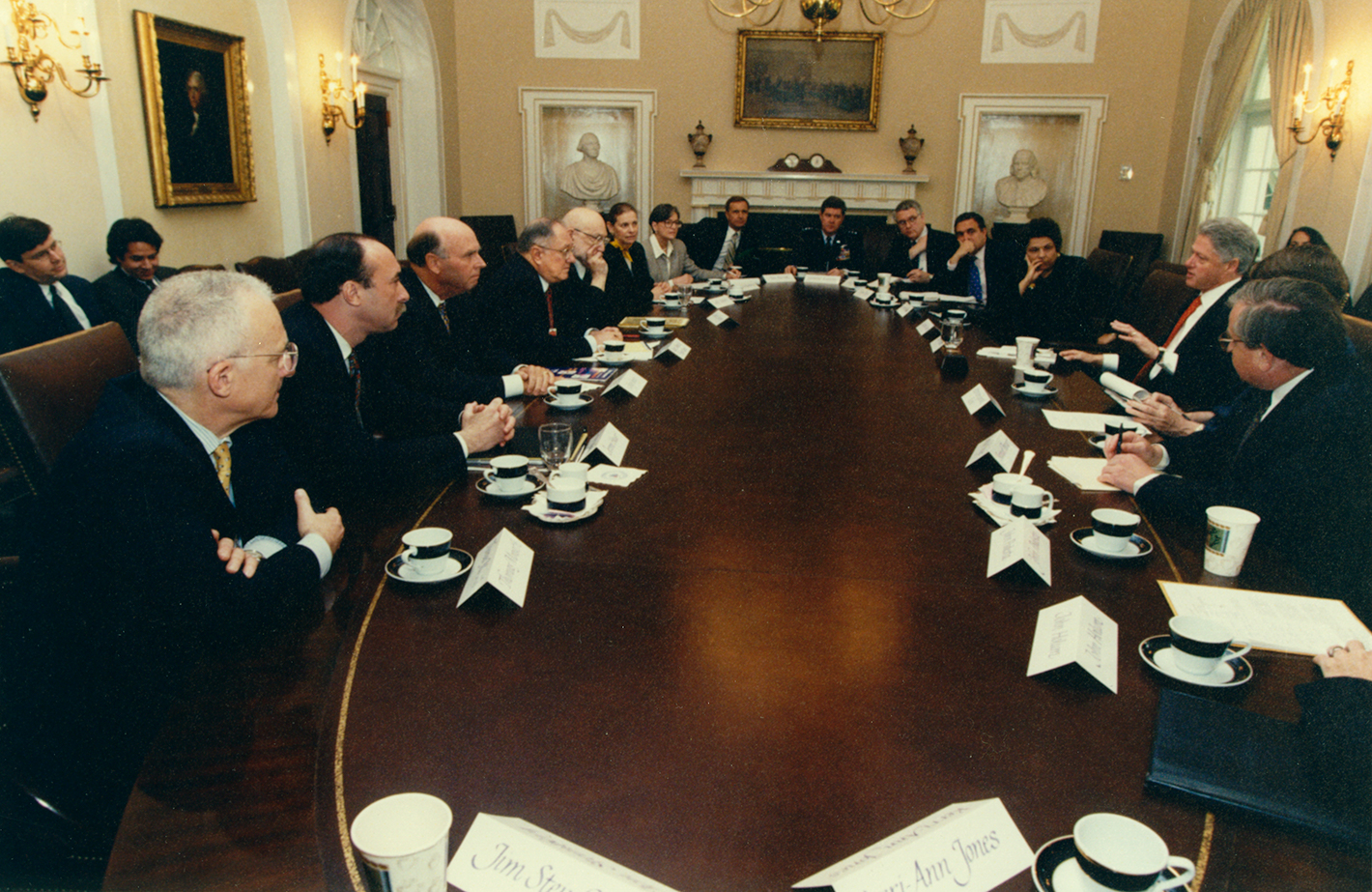J. Craig Venter Institute History of Molecular Biology Collection
Our holdings include the scientific work and achievements of distinguished scientists and Nobel laureates including the J. Craig Venter Institute History of Molecular Biology Collection (formerly The Jeremy Norman Collection), the papers of J. Craig Venter and Hamilton O. Smith, the Sorcerer II Expedition papers and others. The collections encompass a wide breadth of archival materials in both digital and paper formats which provide insight into the development of molecular biology, its allied fields as well as many of the key scientific discoveries that have shaped our world over the last 100 years.
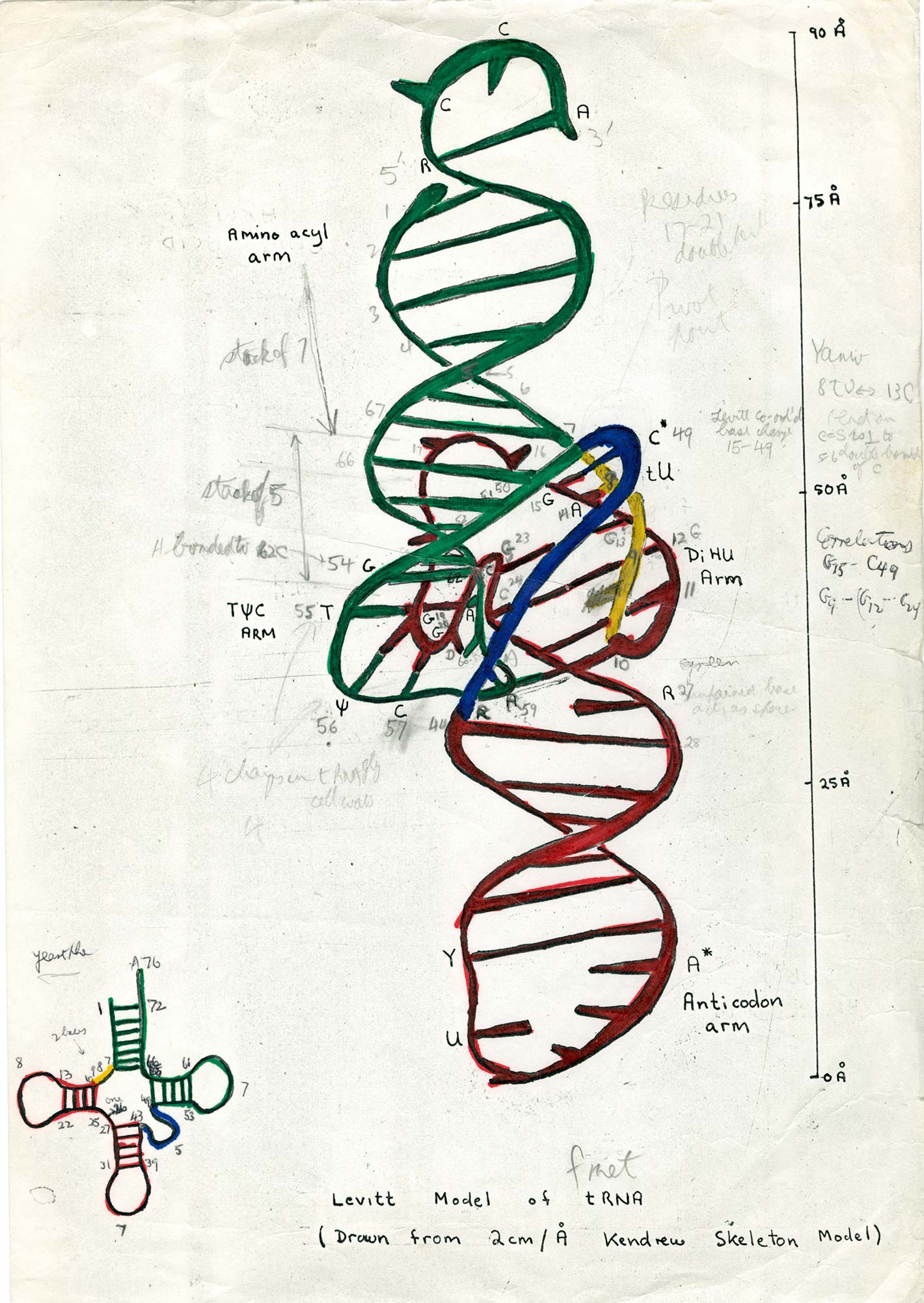
Collections
J. Craig Venter Institute History of Molecular Biology Collection is comprised of materials which document major scientific breakthroughs that led to the founding of molecular biology. Archival materials include correspondence, publications, manuscript drafts and unpublished works, photographs, laboratory notebooks, and/or artifacts from a number of distinguished and prominent scientists such as, Maurice Fox, Rosalind Franklin, Raymond Gosling, and Herbert Wilson as well as Nobel laureates Sydney Brenner, Francis Crick, Max Delbruck, Aaron Klug, James Watson, Maurice Wilkins, Max Perutz, and Sir William Bragg. For more information please read the History of Molecular Biology collection press release. A detailed listing of the holdings of the collection is included in the Online Archives of California.
J. Craig Venter Collection is comprised of correspondence, manuscripts, speeches, research papers, media events and coverage, as well as other materials which document his major scientific contributions.
Hamilton O. Smith Papers includes primary source materials such as correspondence, grant applications, laboratory notebooks, lectures, photographs, Nobel Prize related materials, and manuscripts on various subjects including recombinant DNA H. Influenzae, and DNA methylases. A detailed listing of the holdings of the papers is included in the Online Archives of California.
Sorcerer II Collection contains materials relating to the global oceanographic genome project carried out during the Sorcerer II Expedition. Materials include marine charts, log books, and various other data.
Sven Furberg Laboratory Notebook, 1947-1950
Furberg, a Norwegian scientist working at Birkbeck College conducts research leading to the correct determination of the structure of a nucleotide, in which he sets the sugar at right angles to the bases – later a key element in the discovery of the double helix. Examples from this laboratory notebook demonstrate his research style as well as the first attempt by anyone to build a model of DNA nucleotides. In late 1952 Furberg’s updated helical model was published in his paper “On the structure of Nucleic Acid” which was one of the few resources cited in the successful model proposed by Watson & Crick in ;Nature April 1953. From the Venter Institute collection on the history of molecular biology (Norman collection).
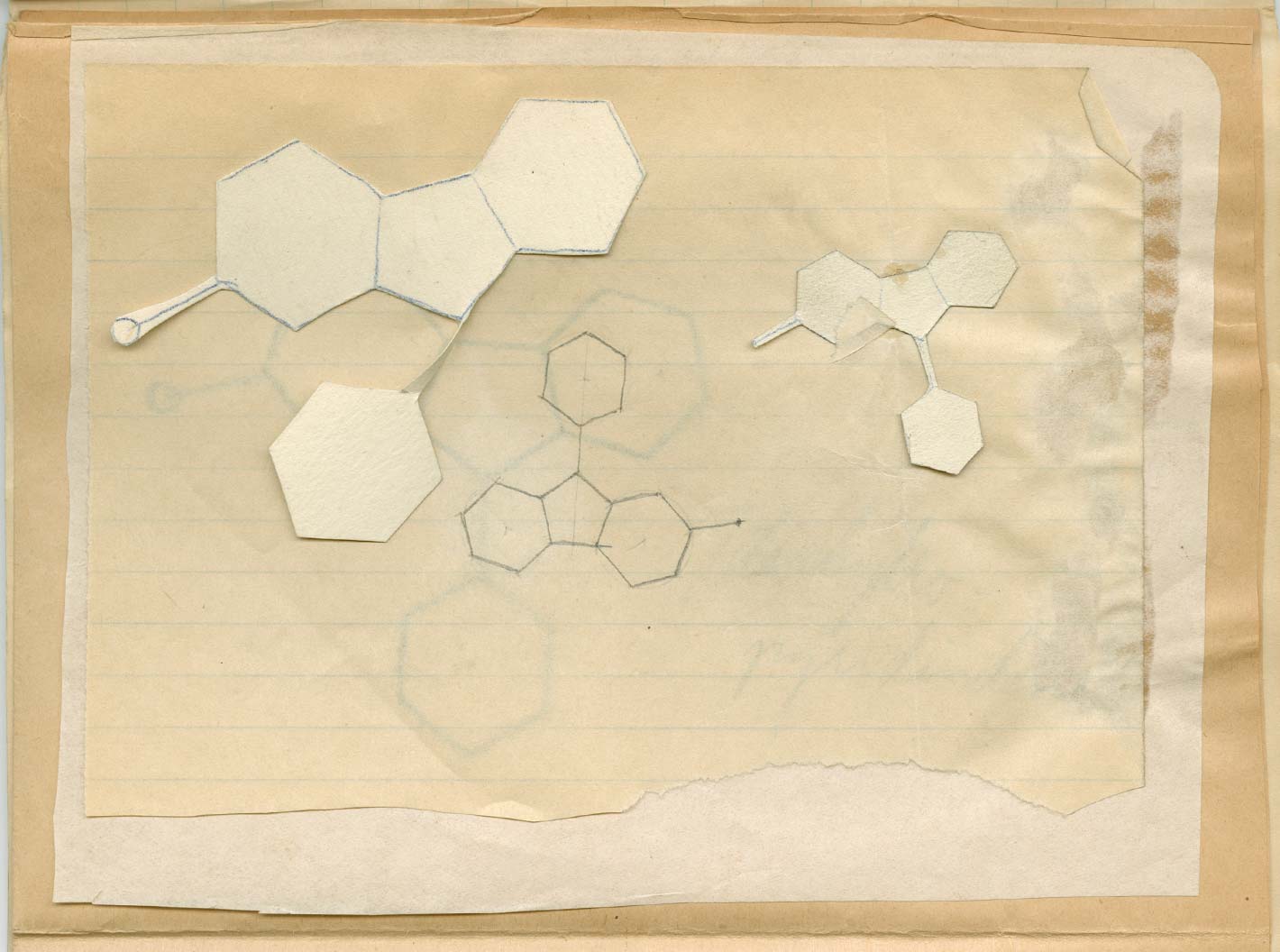
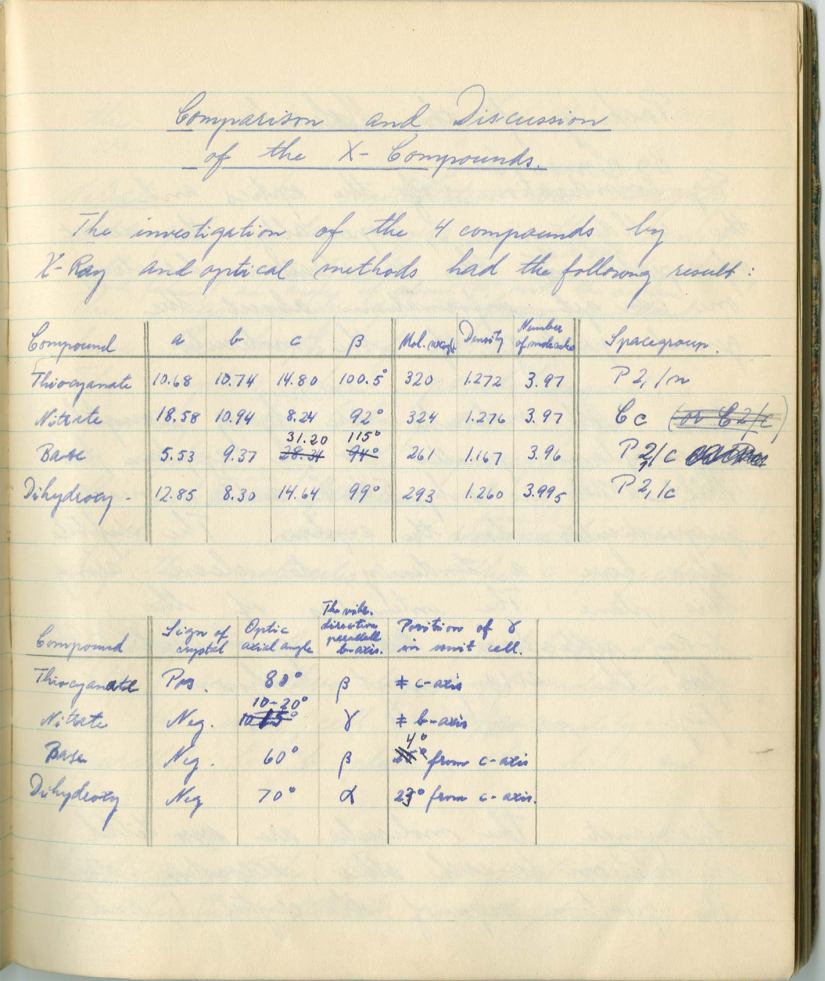
Photo 51
Taken by Rosalind Franklin in May, 1952. The photograph illustrates both the B form (left) and A form (right). Franklin was the first to discover the non-crystalline B form when hydration is increased. This image, shown to James D. Watson by Maurice Wilkins in January 1953, depicts the characteristic X-shaped B form that played a crucial role in the discovery of DNA’s double helix structure. From the Venter Institute collection on the history of molecular biology (Norman collection).
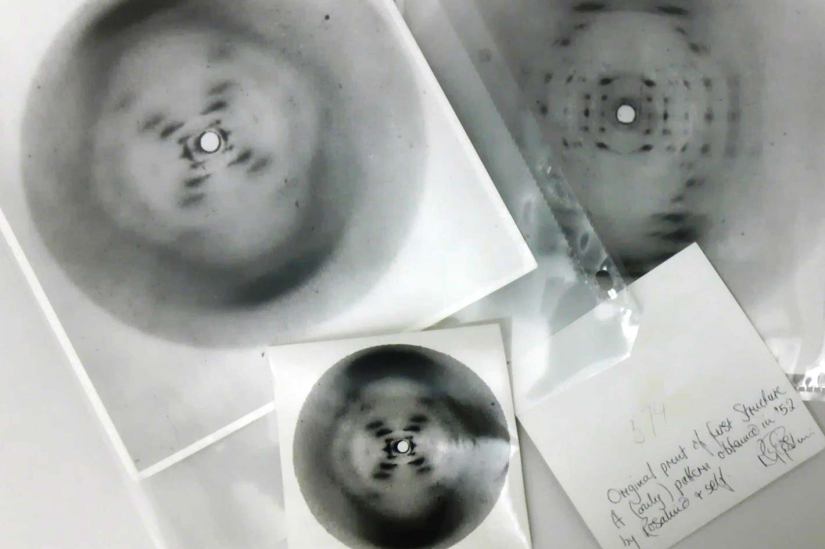
Francis Crick Laboratory Notebook, 1952
This notebook contains 13 leaves of notes in pencil during which time Crick was attempting to prove base pairing experimentally. The experiments, as Crick indicated to Judson in his book Eighth day of creation “were simply just mixing things in solutions and then looking at the way they absorbed ultraviolet light”. From the Venter Institute collection on the history of molecular biology (Norman collection).
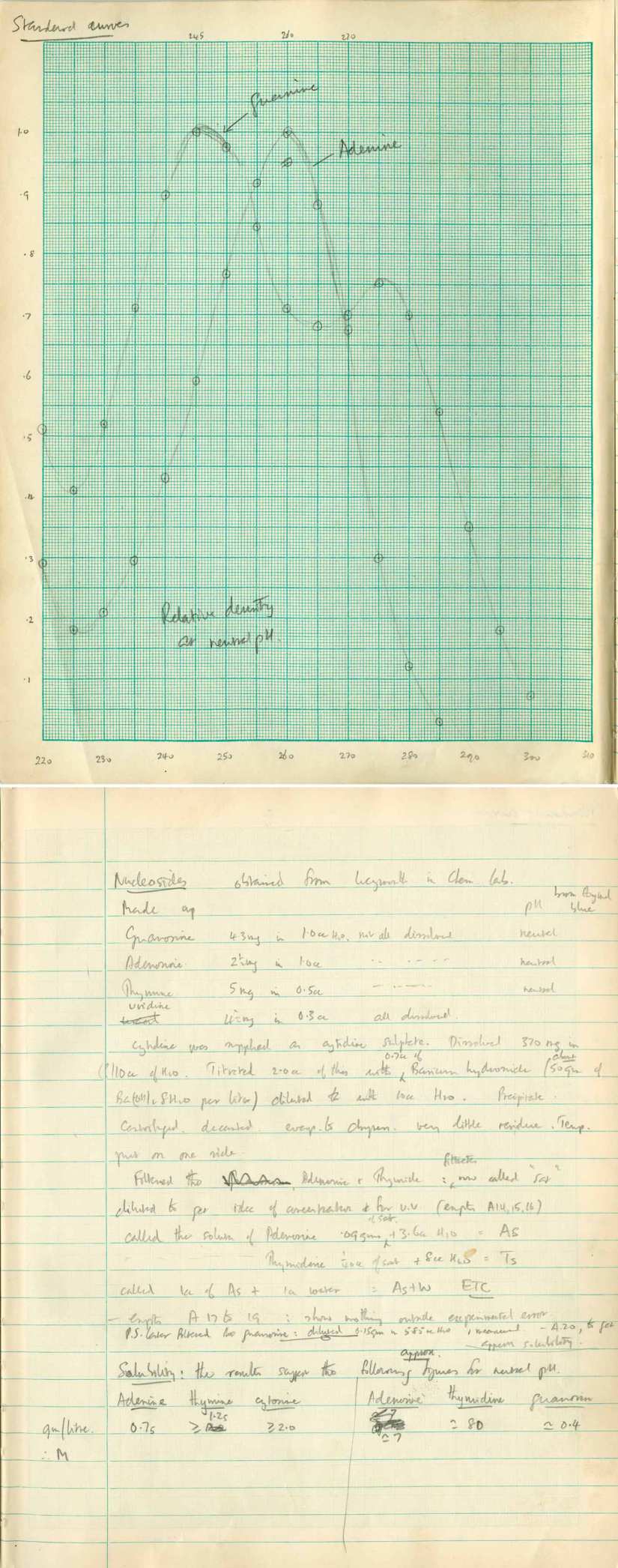
Rosalind Franklin’s Laboratory
This photograph was taken by Franklin’s colleague John Finch shortly after her death in April of 1958. It depicts Rosalind Franklin’s laboratory at Birkbeck College as she had left it. Between March 1953 and April 1958 Franklin led the Virus Research Project where she conducted pioneering work on the Tobacco Mosaic Virus and the Polio Virus. Franklins’ research group included Aaron Klug (1982 Nobel laureate for his development of crystallographic electron microscopy) as well as PhD students Finch and Kenneth Holmes. From the Venter Institute collection on the history of molecular biology (Norman collection).
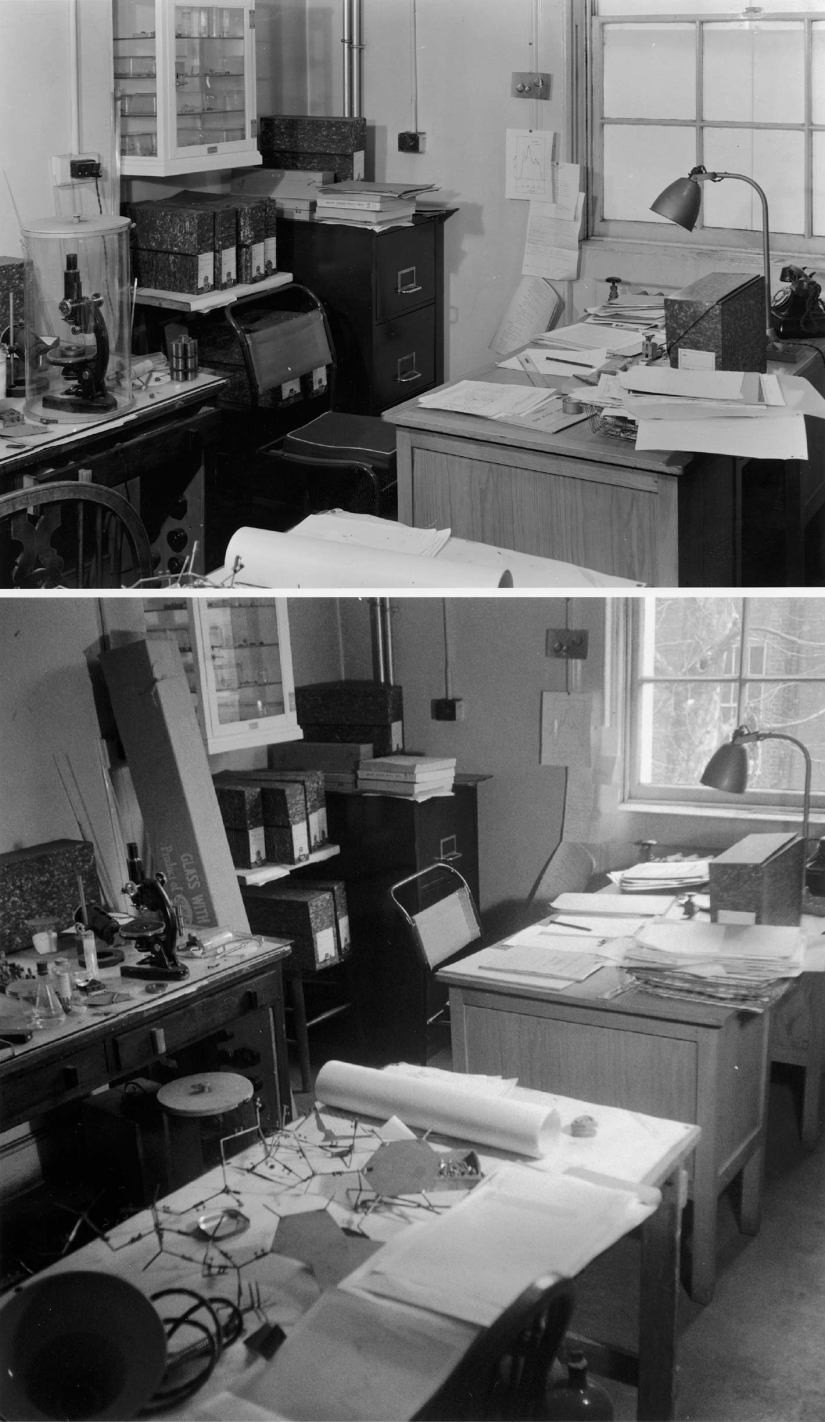
Hamilton O. Smith and the Delegation for Basic Biomedical Research circa 1984
The DBBR was organized in 1977 to respond to requests from Congress and the Administration for information and opinions regarding basic biomedical research. In this image (L-R) Bradie Metheny, Dr. Paul Hopper, Nobel Laureates Renato Delbecco and Hamilton O. Smith, Dr. Mahlon Hoagland, Nobel Laureates Torsten Wiesel and George Palade, and Drs. Warren Hunzicker and George Dunlop speak on behalf of this group. This item, as well as thousands of others are preserved by the JCVI Archives and document Smith’s professional career from his Nobel Prize winning work on restriction enzymes to his most recent work on genome sequencing and the first self-replication synthetic bacterial cell. From the Hamilton O. Smith papers.
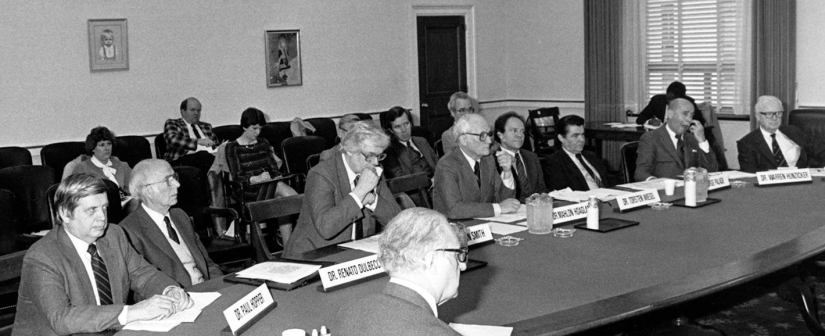
Presidential Roundtable on Genetic Engineering and Biological Weapons, 1998
On April 10, 1998 President Clinton lead a roundtable discussion to discuss advances in technology and their potential implications for biological weapons. The President invited the county’s leading experts to discuss with him both opportunities and national security challenges posed by genetic engineering and biotechnology. One of these select invitees, was J. Craig Venter, seen sitting directly across from the President. Also present are Secretary of Defense William Cohen, Director of Central Intelligence George Tenet, Attorney General Janet Reno, Nobel Laureate Joshua Lederberg, among others. Image from the J. Craig Venter papers.
